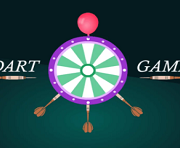Biotic and abiotic factors science game
This science game helps children practice about about biotic and abiotic factors. Abiotic and biotic factors have an impact on the survival and reproduction of organisms, their interaction with other organisms, and the ecosystem they live in. For example, biotic factors can affect the health of an ecosystem, such as parasite infestations and predators. They also influence the species and types of animals and plants that live in it. These factors together form a biome, or biosphere. Both biotic as well as abiotic factors have an impact on the species of animals and plants, and they are responsible for maintaining the environment.
Abiotic and biotic factors
All organisms within an ecosystem are considered biotic factors. They can be divided into three categories: Consumers, Producers, and Decomposers. Producers create food by turning sunlight into organic compounds, which contain carbohydrates and energy. These creatures are known as autotrophs. On the other hand, detritivores rely on abiotic factors. These products are then consumed by detritivores who will eventually decompose them.
Although they are not living, biotic factors can influence the growth of biotic ones. These are temperature, humidity, water. These are vital for living organisms to survive and thrive. Abiotic factors can also promote animal and plant growth. Winds can help with pollination by dispersing seeds in the atmosphere. Humidity can also be affected by wind. Ecosystems are dependent on decomposers.
There are also other abiotic factors that affect the environment, in addition to decomposers. These factors are those that reduce organic matter and return simpler molecules to the soil. Some plants and animals are considered detritivores. Decomposers are essential members of an ecosystem because they help reduce waste and recycle nutrients.
Producers Convert Biotic and Abiotic Elements
Organisms that combine biotic and abiotic factors produce food. Biotic factors are interactions between living organisms such as parasites and diseases. These factors include consumers, producers, and decomposers. Producers are responsible for the conversion of inorganic molecules to complex organic compounds. For example, plants use sunlight to generate energy for photosynthesis and growth. They also release water and carbon dioxide, which are then converted into food. Hydrothermal vent-associated bacteria, on the other hand use hydrogen sulfide to provide food.
Abiotic factors are the amount of sunlight, water and soil. Abiotic factors are non-living, physical components of an ecosystem. They impact the diversity of all living organisms. Organisms wouldn't be able reproduce, grow or survive without these elements. However, without biotic and/or abiotic factors, food would not exist.











